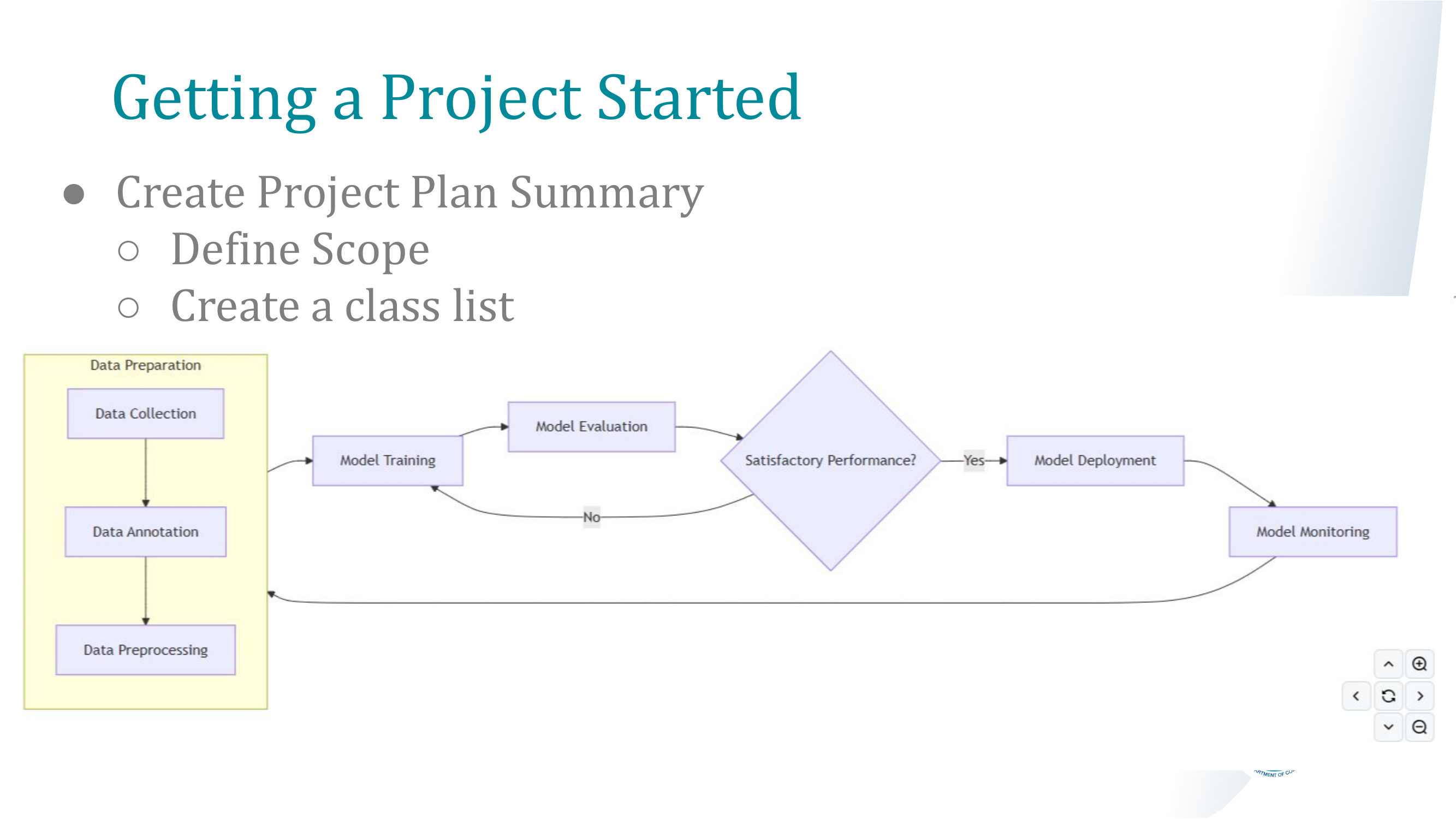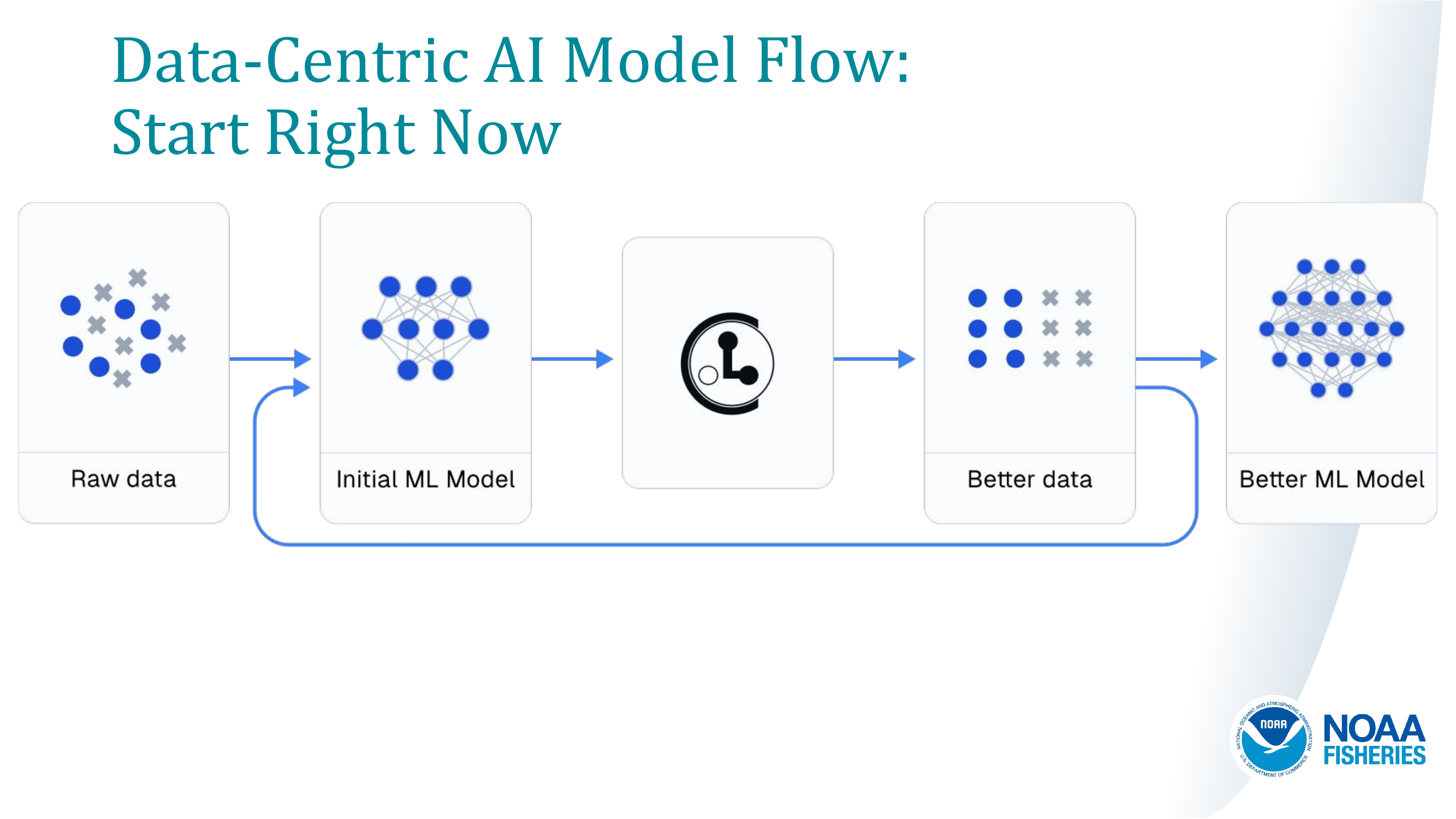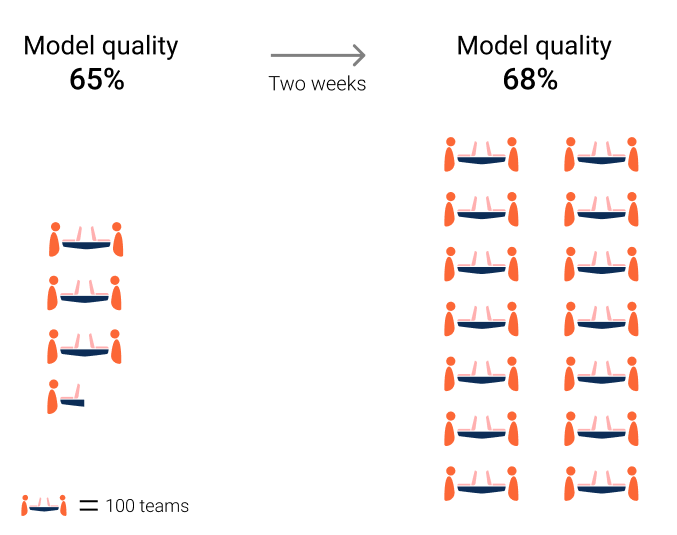3. AI/ML Model Project Lifecycle#
3.1. Similar to Common Data Science Workflow#
graph TD;
A[Ask an Interesting Question] --> B[Get the Data];
B --> C[Explore the Data];
C --> D[Model the Data];
D --> E[Communicate & Visualize Results];
%% Indicating Iterations & Feedback Loops
E --Refine Understanding--> A;
C --Data Cleaning & Feature Engineering--> B;
D --Revisit Data Exploration--> C;
3.2. Simple Lifecycle Examples#



3.3. AI/ML is Non-Linear#
3.3.1. Performance of the model and its output is not proportional to the input. Not just data input, but effort as well.#

Figure: “illustrates the uncertainty in ML development by showing the significant increase in effort but only minimal gains in model quality.”Source: Google Kaggle(AI//ML & ML competition platform) Case Study
3.4. Experimentation is key.#
try different architectures
try and tune hyperparameters
test different training techniques like data augmentation or different optimizers
